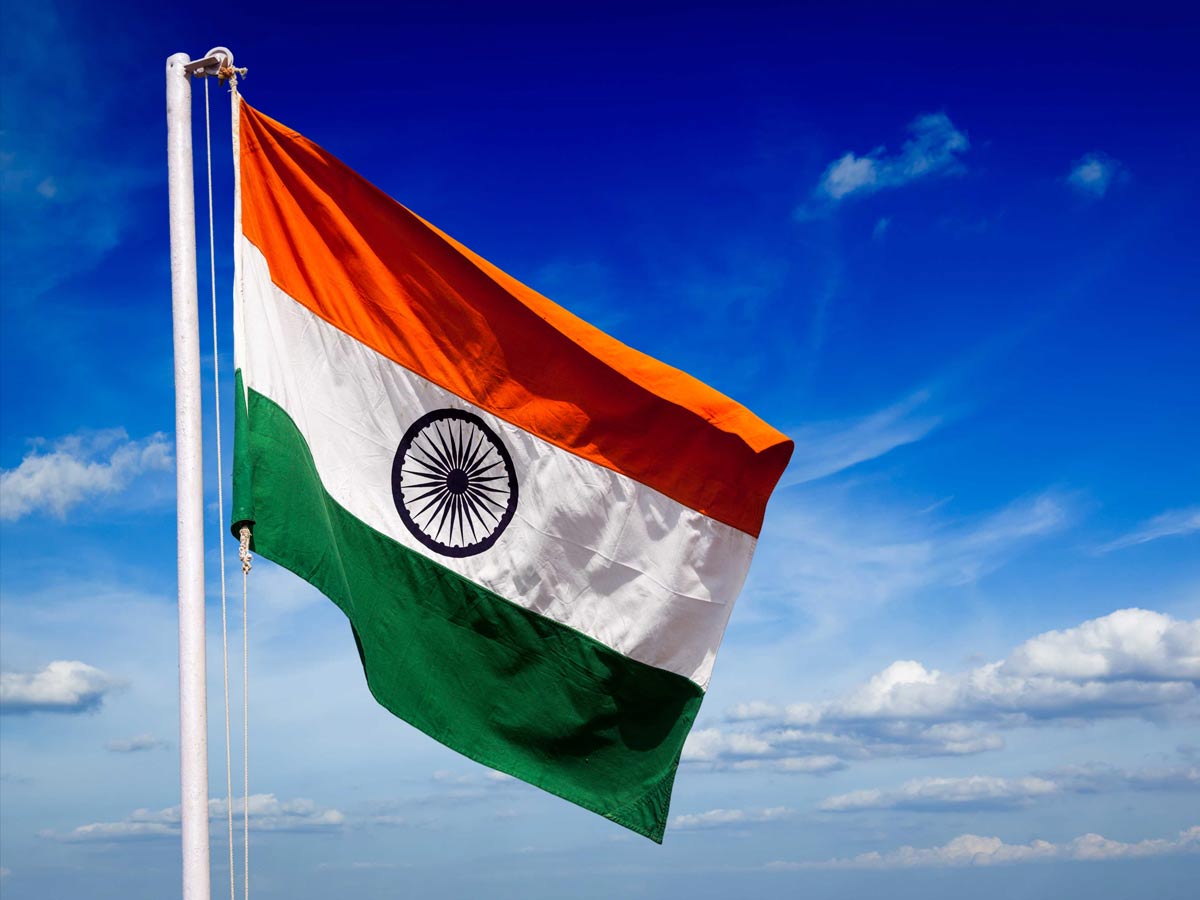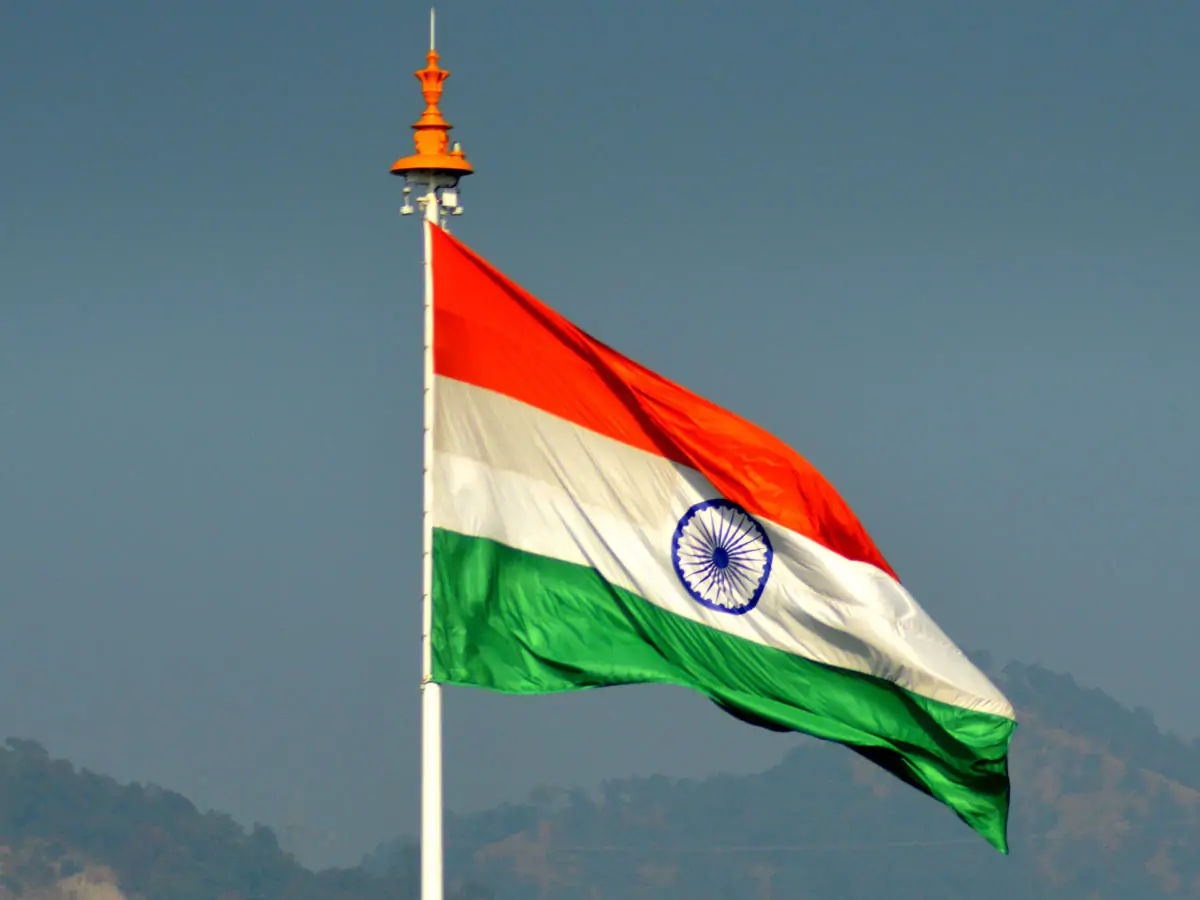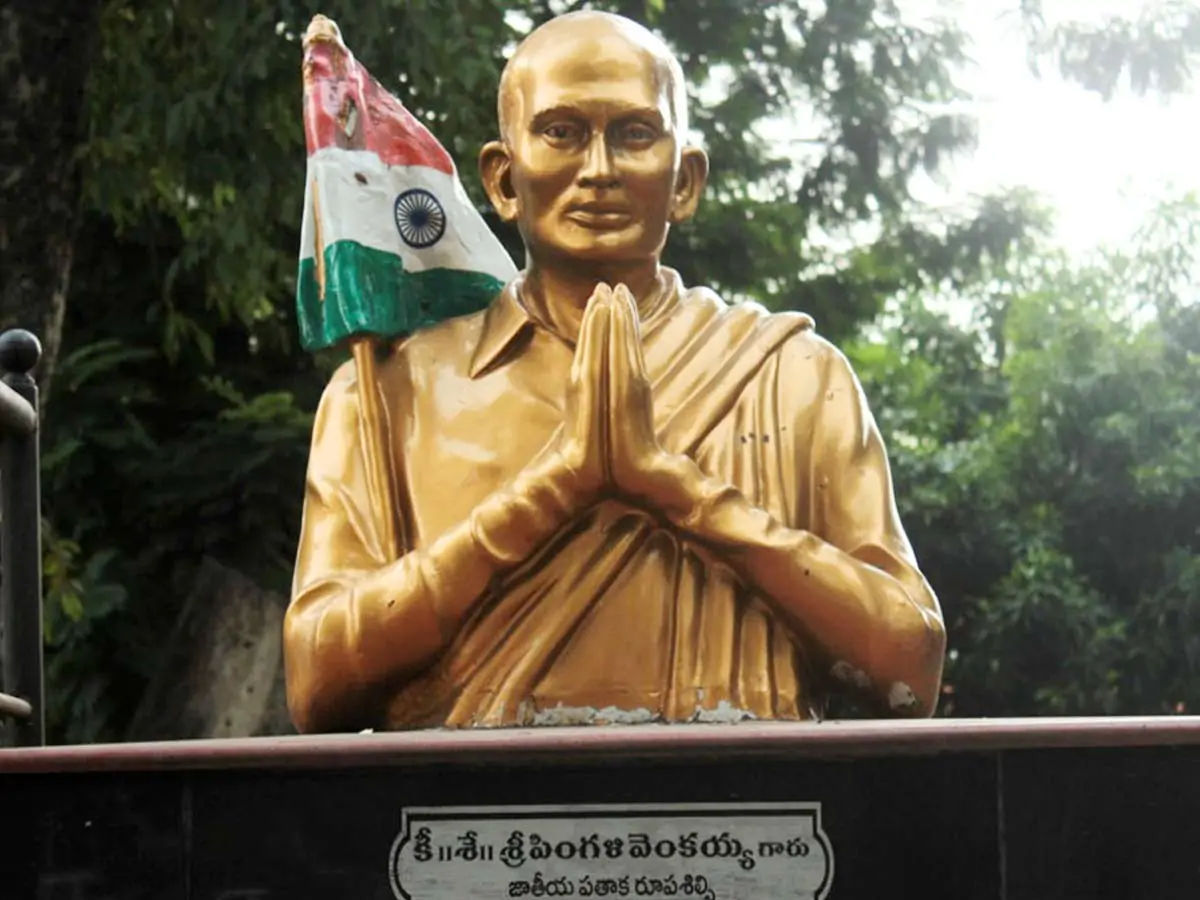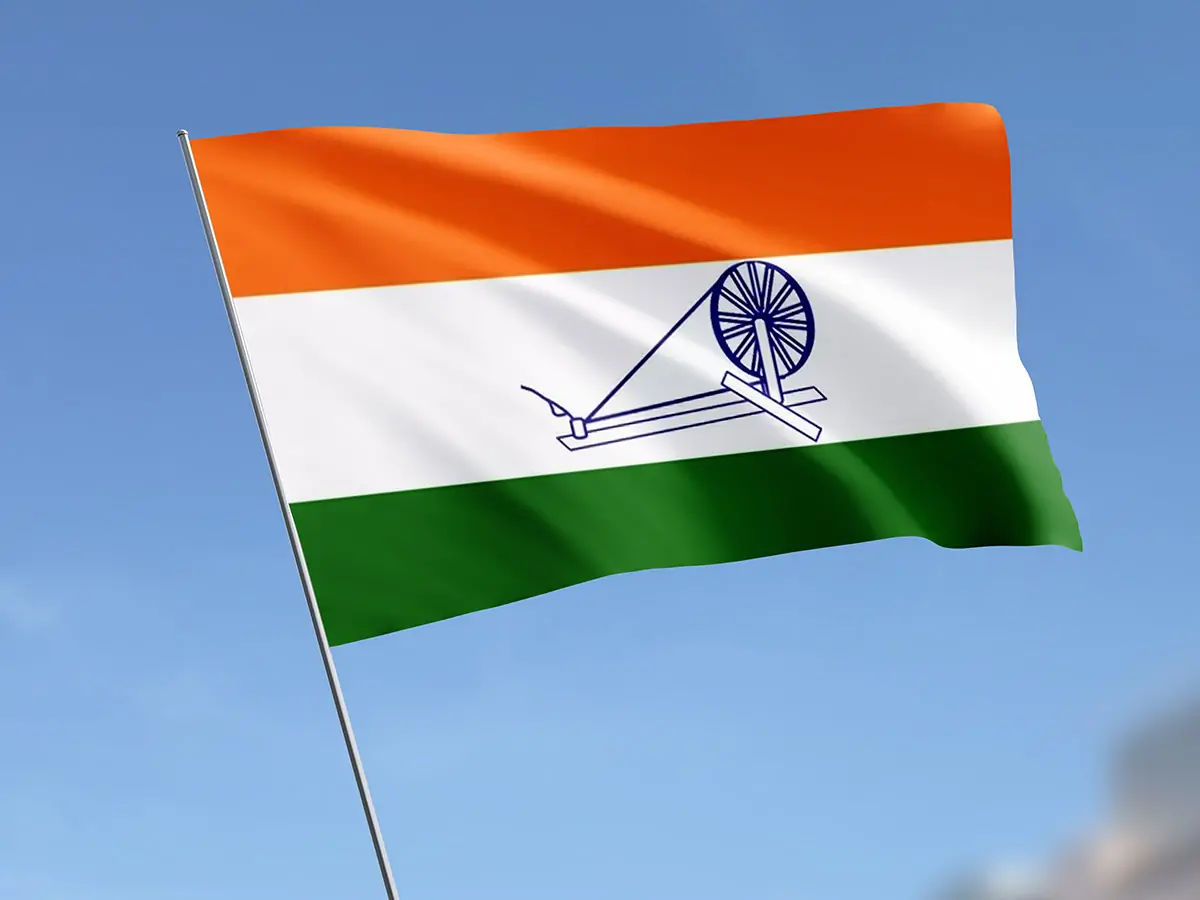Flag of India "Tiranga" History and different Designs
Shortpedia
Content Team
India's national flag is a parallel, horizontal, and rectangular shape tricolor of India saffron, white, and India green with the Ashoka Chakra, a 24 spoke wheel, in navy blue at its center. It was adopted and introduced in its present/current form during a meeting of the Constituent Assembly held on July 22, 1947. It became the official and national flag of the Dominion of India on August 15, 1947. The flag was later adopted as the flag of the Republic of India. In India, the word "tricolor" almost always refers to and resembles the Indian national flag. The flag is based on the Swaraj flag, which Pingali Venkayya for the Indian National Congress.
 The flag must be made of khadi, a form of hand-spun cloth or silk popularised by Mahatma Gandhi. The Bureau of Indian Standards establishes the production process and requirements for the flag. The Khadi Development and Village Industries Commission owns the right to produce the flag and distributes it to regional groups. As of 2009, the Karnataka Khadi Gramodyoga Samyukta Sangha was the one and sole manufacturer of the flag.
The flag must be made of khadi, a form of hand-spun cloth or silk popularised by Mahatma Gandhi. The Bureau of Indian Standards establishes the production process and requirements for the flag. The Khadi Development and Village Industries Commission owns the right to produce the flag and distributes it to regional groups. As of 2009, the Karnataka Khadi Gramodyoga Samyukta Sangha was the one and sole manufacturer of the flag.
The Flag Code of India and other laws about national emblems regulate the use of the flag. The original code prevented private citizens from using the flag except on national holidays such as Independence Day and Republic Day. After hearing an appeal from a private citizen, Naveen Jindal, in 2002, the Supreme Court of India ordered the Government of India to amend the code to enable private citizens to use flags. Following that, the Union Cabinet of India amended the code to provide for restricted use. In 2005, the code was revised once more to allow certain new uses, such as adaptations on some types of clothing.
What is the national flag of India?
The national flag is a horizontal and rectangular shape tricolor of equal proportions of India saffron (Kesari) at the top, white in the center, and India green at the bottom. The flag's width to length ratio signifies that it is two to three. The chakra is represented and resembled by a navy-blue wheel in the center of the white band.
Who designed the present national flag of India?

Pingali (or Pinglay) Venkayya designed the Indian flag, which was first proposed to Mahatma Gandhi, leader of the All-India Congress, in 1921. It was made up of colors aligned with the two major religions, red for Hindus and green for Muslims.
History and designs of Flag of India
Pingali Venkayya of Macchilipatnam designed the new tricolored Indian National flag in 1916. Although the flag has undergone numerous changes, Pingali Venkayya is credited with designing the most basic version. Although, before the 'Tiranga,' there were other iterations of our national flag. Our Tricolour's evolution is intertwined with the evolution of our nation's culture and the Indian National Movement.
Sister Nivedita, also known as Bhagini Nivedita in India, is widely credited with designing the first Indian flag. In 1904, this Irish disciple of Swami Vivekananda modeled a flag with a 'Vajra' in the center and the words 'Vande Mataram' written in Bengali on either side of the flag. While the color red represented the liberation struggle, the color yellow represented victory. The Vajra represented strength and was a representation of Lord Indra's arms.

On August 7, 1906, the national flag was raised in Kolkata's Parsee Bagan. This was the first time the Indian national flag was flown over what is now known as Girish Park. This was a tricolor flag with three equal stripes of green at the top, yellow in the center, and red at the bottom. The green panel featured eight half-opened lotus flowers, while the yellow section featured the words Vande Mataram in Devnagiri script.
Madam Bhikaji Cama, Veer Savarkar, and Shyamji Krishna Varma designed another flag based on the Calcutta flag. This, popularly known as the Cama flag, was displayed at the socialist conference in Berlin. This was heavily influenced by the Calcutta flag. The top strip included only one lotus and seven stars, which denoted 'Saptarishi,' and the color saffron was added in the top row, while green occupied the bottom strip. The words 'Vande Mataram' were also written on the flag. This was the first time India's flag was flown at an international level. It was commonly referred to as the Berlin Committee flag.

In 1917, the third flag appeared. During the Home Rule Movement, Annie Besant and Lokmanya Tilak built this. This was a watershed moment in Indian history; the Home Rule movement had laid the groundwork for the national struggle. This flag was made up of five red and four green horizontal stripes that were alternately arranged. Saptarishi was depicted on this flag with seven stars superimposed on him. The Union Jack symbol was located in the upper left corner, close to the pole. On the right corner, there was also a white crescent and star.
When Mahatma Gandhi visited Vijayawada in 1921, he was accompanied by a young man named Pingali Vankayya, who brought a flag designed by him in red and green colors to represent India's two major religious groups. However, Mahatma Gandhi suggested that white color be added to the flag to reflect all of the other cultures that lived within the country. He also proposed using the 'Spinning Wheel,' also known as the Charkha, which emerged as a popular symbol of the nationalist struggle.

A decade later, 1931 became a watershed moment in the evolution of our tricolor. It was critical that the flag reflected the nation's ethos and did not have any religious symbols. The flag was redesigned by Venkayya. The red was substituted with saffron and positioned on top. The white and green stripes were kept as the middle and bottom panels, respectively. Gandhiji's Charkha symbol was mounted in the center of the flag. Saffron represented power, white represented fact, and the bottom represented fertility. In the Congress Committee, a resolution was passed to make this the official flag of India. This was also the Indian National Army's battle ensign.
The new tricolor was created in 1947. Although the colors and their meanings remained constant. Only the Spinning Wheel or Charkha symbol was replaced as the icon on the white stripe of the flag by Ashoka's Dharma Charkha. The Constituent Assembly adopted it as the National Flag of independent India on July 22, 1947.
